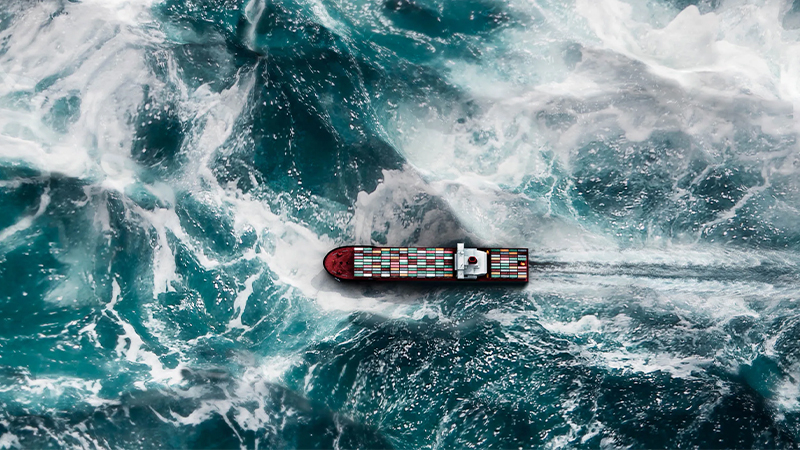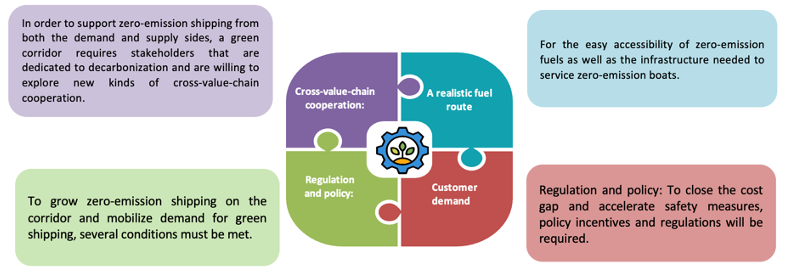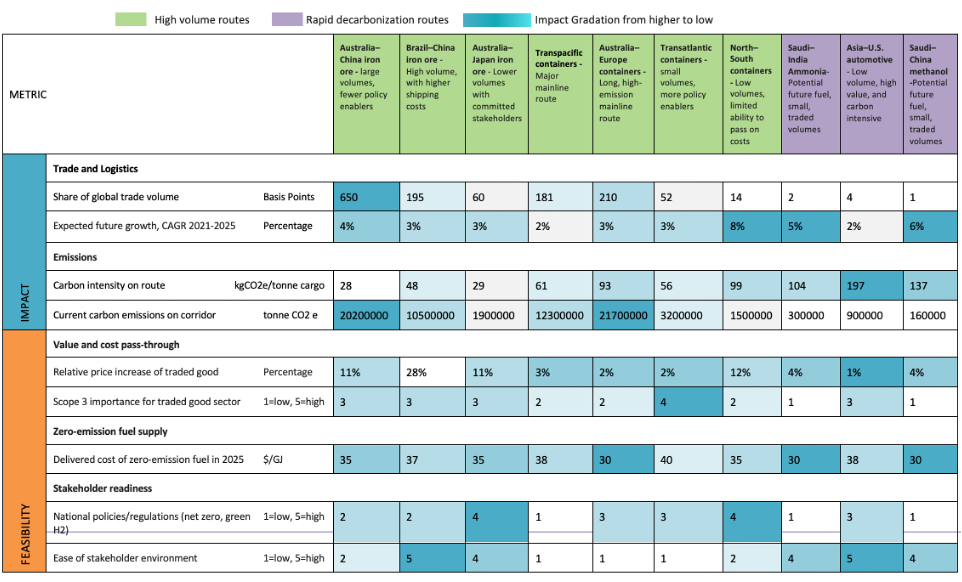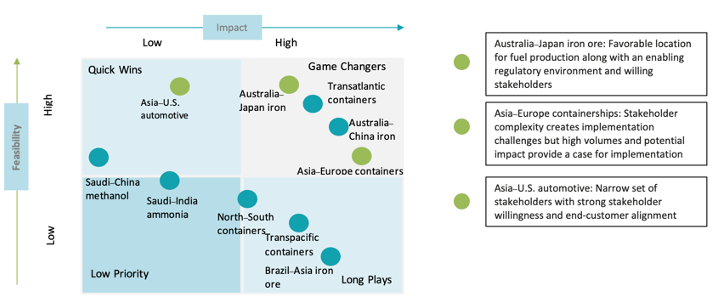
Green Corridor Routes – Shipment Decarbonization Goals for 2050


In achieving a completely decarbonized maritime industry by 2050, a scaled-up deployment of zero-emission fuels and ships must begin within the next 10 years. Decarbonization technologies are being trialed and shown, but considering how diverse and intricate the global shipping sector is, scaling up these early initiatives into industry-wide solutions would be difficult as they would need to be implemented more quickly, at a higher scale, and also at a lower cost. Depending on the route, the overall cost of vessel ownership increases by between 40 and 60 percent when using zero-emission fuels instead of conventional fuels. Hence, we consider green corridors, the designated trade routes connecting significant port hubs, where zero-emission solutions, which are being tested and endorsed, simplify some of sustainability complexity.
How Do Green Corridors Support Shipments’ Sustainability Mission?
Green corridors enable decision-makers to establish an enabling environment with targeted regulatory actions, financial incentives, safety standards, and other favorable conditions for quicker action. Additionally, they can create conditions that would drive the demand for green shipping on particular routes. Finally, by generating downstream effects that lower shipping emissions on adjoining routes, green corridors can aid the acceleration of the decarbonization process. A route must have the potential for extensive decarbonization to be chosen as a prospect for a green corridor.
Steps in Leveraging Green Corridors to Achieve Net-Zero Carbon Emission
The optimum size of these corridors would be sufficient to accommodate all important value chain participants, such as fuel producers, cargo owners, and regulatory bodies. They would provide assurance to fuel producers about offtake and send resounding messages to ship owners, shipyards, and engine producers. This would encourage them to invest significantly in zero-emission shipping, thus reducing the risks to a tolerable degree for everyone concerned. Hence, it is vital to choose the initial green corridors, and a potential green corridor needs the following four essential components:

Green Corridor Selection Criteria
The selection procedure for initial green corridors is critical. It is crucial that the routes chosen as green corridors be implementable and capable of producing lessons that can be applied to other routes. Selected corridors should be strong prospects for widespread decarbonization, and ideally, they should have a multiplier effect that lowers shipping emissions elsewhere.
Following a thorough, multi-criteria study, 10 routes were preselected for either impact or viability and then tested. Nine critical indicators were created by further defining impact and feasibility.

-
Following a step-by-step filtering procedure, 10 potential green corridor prospects were chosen out of the whole universe of shipping routes so that they could be further examined.
-
The shortlisting of all global shipping corridors that accounted for more than 0.1 percent of the amount of global commerce was the first phase in the corridor selection process.
-
Then, based on the reasoning that there would be no incentive for owners of fossil fuel cargo to decarbonize the transportation of their goods, all routes trading fossil fuels, such as oil and coal, were eliminated. That left about 23 routes, each of which accounted for more than 0.1 percent of volumetric world commerce. Seven of these twenty-three passageways were chosen from two main vessel sub-categories: containerships and dry bulk.
Green Corridor Prioritization Framework

-
Due to the amounts traded and the fact that they are well-established shipping lane routes, three major mainline corridors—the Transpacific, Asia–Europe, and Transatlantic—were chosen for the containership category. A non-mainline route—North–South—was also included in the selection process to increase variety.
-
The Australia–Japan iron ore route was chosen for investigation out of the three that were considered. Despite the fact that the Australia–Japan and Brazil–China iron ore routes have greater potential for decarbonization, the distance between the two countries makes it more likely that transportation costs will increase when fuel prices rise along the corridor. The decarbonization potential of the Australia–China iron ore routes was likewise much higher, but from the perspective of viability, the Australia–Japan route was shown to have a higher likelihood of favorable regulatory conditions. A successful deployment of the Australia–Japan route might have major spill over consequences for the Australia–China route because both routes have the same basic framework and several stakeholders.
-
Regardless of the potential stakeholder uncertainty of containership routes, the Asia–Europe containership route was chosen as the second green corridor taken into consideration in this report due to its low delivered fuel cost, potential Middle Eastern bunkering, and supportive regulatory environment on the European leg of the route.
Overall, important milestones must be defined, stakeholders must agree on a road map for a green corridor, and demand must be mobilized to promote zero-emission container transportation. Regulators and incentives that would encourage the transition to green shipping can also be considered by policymakers. Establishing them in this area would create a clear demand signal for green shipping practices and pave the way for their acceptance globally.
Key Takeaway
-
The pilot projects of possible green lanes demonstrate how stakeholder cooperation might create these corridors, assisting the shipping sector in achieving its objective of complete decarbonization by 2050.
-
Reliable fuel channels, value chain activities, and stimulated demand will be the foundations of success. Partnerships are essential: based on a common commitment to zero-emission shipping, the whole value chain, including cargo owners, fuel producers, and vessel operators, has to come together.
-
A transition to zero-emission shipping in specific routes can be encouraged by several targeted modifications that policymakers might take into account. The sector can help the globe move closer to net-zero emissions if the stakeholders come to an agreement on a reliable, ambitious green-corridor strategy and put it into action collectively.
Related Insights:
View All
Get more stories like this
Subscirbe for more news,updates and insights from Beroe






